Last Updated on 4 months
Exploring the Versatility of All-Season Tires
All-season tires have become popular among drivers due to their versatility and ability to handle various weather conditions. Boasting unique tread patterns that incorporate elements from both summer and winter tire designs, all-season tires provide a balanced driving experience for most everyday driving situations. While they perform admirably in mild climates and during non-extreme weather, the question remains whether they can truly stand up to the challenge of severe winter conditions with deep snow and ice. Do the capabilities of all-season tires justify their title, or should drivers in frigid climates invest in specialized winter tires?
Key Takeaways
- All-season tires offer combined features of summer and winter tires for versatile performance.
- These tires suit everyday driving in mild climates and non-extreme weather conditions.
- All-season tires may struggle to provide optimal traction and safety in deep snow and icy conditions.
- Drivers in regions with harsh winters and extreme cold should consider using specialized winter tires.
- Evaluating driving habits, geographic climate, and vehicle requirements is crucial when selecting the right tires for year-round safety and performance.
Unveiling the Mystery of All-Season Tires
The appeal of all-season tires lies in their promise to deliver consistent performance throughout diverse weather scenarios. However, their versatility comes with trade-offs, particularly when facing wintry conditions. Understanding the tire’s tread pattern, materials used, and temperature tolerances is fundamental to making an informed decision about their suitability for one’s driving requirements.
All-Season Tires: Designed for reliable tire performance and weather versatility, but come with limitations.
The tread pattern is essential in tire selection, as it greatly impacts driving safety and performance across various conditions. As a blend of summer and winter tire designs, all-season tires offer a versatile solution for drivers.
Another crucial aspect of tire construction is using specific materials and compounds. While all-season tires are designed for optimum performance in mild temperatures, they may become less effective in extreme cold conditions. Let us explore the ramifications of these choices in greater detail.
- Tread pattern – The unique design offers advantages for drivers in terms of grip and handling on wet and dry surfaces, ensuring reliable tire performance and driving safety.
- Materials – Manufacturers utilize specific rubber compounds to provide flexibility and durability throughout various temperature variations. However, this might pose challenges in extreme weather conditions.
- Temperature tolerances – Though all-season tires are versatile across multiple environments, severe wintry conditions may hinder their performance and compromise safety.
| Factors | All-Season Tires |
|---|---|
| Tread Pattern | A combination of summer and winter tire designs for maximum weather versatility. |
| Materials and Compounds | Optimized rubber compound for mild temperatures but might be less effective in extreme cold. |
| Temperature Tolerances | It can handle various temperatures but may struggle in severe wintry conditions. |
In conclusion, understanding the core aspects of all-season tire technology is crucial when assessing their suitability for specific driving conditions and requirements. While they offer arguably balanced performance throughout most weather scenarios, it is essential to consider potential compromises when confronting extreme cold and harsh winter conditions.
The Engineering Behind All-Season Tire Technology
All-season tires offer a balanced approach to addressing various road conditions, made possible through innovative engineering design and advanced tire materials. Combining optimized tread patterns and rubber compounds facilitates versatile performance while ensuring durability and safety in different weather scenarios.
Dissecting the Tread Pattern for Versatile Performance
One of the key factors contributing to the adaptability of all-season tires is the design of their tread pattern. The primary goal is to enhance road traction and handling on dry and wet road surfaces by blending straight, diagonal grooves and siping. An ideal tread pattern for all-season tires includes:
- Moderate tread depth to ensure a well-balanced grip and water dislodgement
- Diagonal grooves to guide water away from the tire’s contact patch
- Numerous sipes (small slits) provide additional biting edges for improved handling during wet or slippery conditions
The innovative tread pattern on all-season tires allows for efficient water evacuation, helping to prevent hydroplaning while also ensuring stable handling and comfort during everyday driving.
Material Composition and Temperature Tolerance of All-Season Tires
All-season tires rely on a unique rubber compound that balances temperature tolerance and tire durability. This compound is designed to perform optimally above freezing temperatures but may stiffen or lose grip in colder climates. Key differences between all-season and winter tire compounds include:
- All-season tires use a less aggressive rubber composition, catering to mild temperatures and providing longer tread life
- Thanks to specialized rubber compounds that enhance grip and control on icy surfaces, winter tires maintain flexibility in extremely cold weather.
It is essential to acknowledge the limitations of all-season tire materials when considering their suitability for a specific driving environment. While they excel in above-freezing climates, their cold-weather performance may be compromised, putting drivers at risk in extremely low temperatures.
Performance Analysis: Dry and Wet Road Conditions
All-season tires are designed to provide a versatile driving experience that caters to dry road performance and wet road conditions. To understand how these tires perform under different circumstances, it’s essential to analyze their handling, grip, and hydroplaning resistance.
When it comes to choosing a tire, you want something that can keep you safe and comfortable on the road, no matter the weather. That’s where all-season tires come in, as they deliver commendable performance for everyday driving.
- Handling: All-season tires offer improved steering precision and responsiveness thanks to their balanced tread pattern design.
- Cornering Grip: These tires provide a good level of grip when cornering, ensuring safe and controlled turns during high-speed driving.
- Overall Driving Comfort: All-season tires typically perform well in dry conditions with a comfortable and stable driving experience, offering a smooth ride regardless of the type of vehicle.
Wet Road Conditions:
- Tread Pattern: The innovative tread pattern of all-season tires enables efficient water evacuation, preventing hydroplaning by maximizing water dispersal.
- Hydroplaning Resistance: Thanks to their unique design, all-season tires help reduce the likelihood of hydroplaning, maintaining a confident driving experience.
- Handling and Grip: Under wet conditions, all-season tires provide safe and stable handling and adequate grip for driving on wet roads.
| Performance Factors | Dry Road Performance | Wet Road Conditions |
|---|---|---|
| Handling | Improved steering precision and responsiveness | Safe and stable handling |
| Cornering Grip | Good level of grip for controlled turns | Adequate grip for driving on wet roads |
| Overall Driving Comfort | Comfortable and smooth ride | Confident driving experience with reduced hydroplaning risk |
| Hydroplaning Resistance | Not Applicable | Efficient water evacuation and dispersal |
All-season tires are engineered to provide drivers with reliable and consistent performance across various weather conditions. They deliver commendable dry road handling, cornering grip, and overall driving comfort. They are also designed to handle wet road conditions by maximizing water dispersal and reducing the chances of hydroplaning.
Limitations of All-Season Tires in Severe Weather

While All-Season Tires are designed to perform well in various weather conditions, they have certain limitations when handling severe weather challenges, particularly during winter. Discuss these limitations in detail, specifically their performance on snow and ice, and their flexibility in extreme cold.
Compromises in Snow and Ice
When confronted with deep snow and icy roads, the performance of All-Season Tires can be significantly compromised. These tires are not specifically engineered for such conditions, unlike winter tires, which feature deep treads and specialized rubber compounds to provide better snow and ice traction. This limitation can negatively impact winter driving safety and road handling, making them a less suitable choice for drivers who frequently face heavy snowfall and icy roads.
It’s important to recognize the tire compromises that exist with All-Season Tires when driving in severe winter conditions; they are not a perfect solution for every situation and may underperform when compared to winter tires.
The Impact of Extreme Cold on Tire Flexibility
Another crucial factor to consider when evaluating the suitability of All-Season Tires for severe weather is their performance in extremely cold temperatures. As the mercury dips below 45°F (7°C), these tires can experience a significant decline in tire flexibility, which reduces traction and control, ultimately affecting road safety.
On the other hand, winter tires are specifically designed to retain flexibility in extreme cold, allowing them to maintain better road grip and stability. The difference in composition and design between All-Season and winter tires results in discernible disparities in winter performance, further emphasizing the need for drivers to carefully assess their region’s climate and driving requirements before making a tire selection.
- Explore the capabilities of All-Season Tires for your local climate and its challenges.
- Consider switching to winter tires if you frequently deal with deep snow, icy roads, and extremely cold temperatures.
- Always prioritize safety and performance when driving, especially during severe weather conditions.
Comparing All-Season Tires to Winter and All-Weather Alternatives
When determining the best type of tire for your vehicle, it is essential to consider the unique features and benefits of all available options, such as All-Season Tires, Winter Tires, and All-Weather Tires. Each provides varying levels of performance depending on weather conditions and driving environments.
All-season tires are designed for year-round use in moderate climates and, as mentioned earlier, excel in dry and wet conditions but fall short in snow and ice. Winter tires, on the other hand, are specifically engineered for extreme cold, snowy, and icy conditions. All-weather tires present a middle ground, delivering enhanced performance in light to moderate snow and ice without requiring seasonal tire changes.
One of the key distinctions between these tire types is the 3-Peak Mountain Snowflake (3PMSF) designation, which indicates a tire’s ability to perform well in snowy and icy conditions. This symbol is found on the sidewall of tires that meet specific traction criteria, including all-weather and most winter tires, but is rare on all-season variants.
| Tire Type | Dry and Wet Performance | Snow and Ice Traction | 3PMSF Designation |
|---|---|---|---|
| All-Season Tires | Excellent | Poor | Rare |
| Winter Tires | Average | Excellent | Common |
| All-Weather Tires | Excellent | Good | Common |
Choosing between all-season, winter, and all-weather tires depends on your climate, driving habits, and safety needs. Ultimately, it is crucial to consider all factors and compare the performance of each tire type to make an informed decision for your vehicle.
Consumer Reports: Real-World Experiences with All-Season Tires
Real-world experiences shared by drivers in various consumer reports can shed light on all-season tires’ overall performance and limitations. These testimonials emphasize the reliability of all-season tires for everyday driving conditions, pointing out certain restrictions during severe snow, ice, and extremely cold temperatures.
“I’ve been using all-season tires on my car for about two years now, and they’ve been great for everyday driving, such as commuting to work and running errands. However, during a recent snowstorm, I had some difficulty navigating the icy roads and wished I had a set of winter tires.” – Sarah J., New England resident
Many consumer reports emphasize that drivers should carefully assess their driving patterns and regional weather conditions when selecting the appropriate vehicle tires. A table showing the pros and cons of all-season tires based on driver feedback is provided below:
| Pros | Cons |
|---|---|
| Good traction on dry and wet roads | Reduced traction and handling on snow and ice |
| Long-lasting tread life | Decreased performance in extreme cold temperatures |
| Comfortable and quiet ride | Not as effective as winter tires in severe weather conditions |
As the table shows, drivers often report contentment with the performance and comfort all-season tires provide during mild and wet road conditions. However, their efficiency drops when faced with severe winter weather and extremely low temperatures. Therefore, it is essential to determine the specific needs of each driver to maximize vehicle safety.
- Review consumer reports and tire reviews for firsthand experiences
- Examine regional weather and climate patterns
- Evaluate personal driving habits and conditions
In conclusion, understanding the capabilities and limitations of all-season tires is essential for making an informed decision. Carefully considering real-world experiences shared by other drivers, regional weather patterns, and personal driving habits will aid in selecting the most suitable tire option to ensure optimal vehicle safety.
Seasonal Tire Swapping: Costs vs. Benefits
When considering whether to swap your tires seasonally, it is crucial to weigh the costs and practical benefits to make an informed decision. This analysis should consider factors such as tire rotation costs, safety improvements, and tire longevity.
Evaluating the Financial and Practical Aspects of Tire Rotation
Tire rotation involves moving tires from one position on a vehicle to another, from front to rear or side to side, to ensure even wear and maximize tire life. Changing tires according to the season could prove beneficial from a safety standpoint, but the expenses can be significant. To help make an informed decision, let’s examine the financial and practical aspects:
| Aspect | Costs | Benefits |
|---|---|---|
| Purchasing Tires | Investing in a separate set of winter and summer tires, with an added initial cost. | Improved safety and performance during specific weather conditions, extending tire life using the appropriate tire variant during its optimal season. |
| Changing Tires | Professional service fees for swapping tires twice a year, or the need for time and effort to perform the task oneself. | Increased safety through using tires optimized for the current road conditions, reducing the risk of accidents. |
| Storage | Potential storage fees for off-season tires or the requirement for sufficient space to store them at home. | Easy access to tires for future seasonal swaps, eliminating the need for multiple tire purchases. |
| Maintenance | Additional costs for regular tire pressure checks and rotations for both sets of tires. | Maximizing tire life by evenly distributing wear, enhancing performance, and safety over time. |
While seasonal tire swapping and ongoing maintenance costs can be substantial, the benefits of improved safety, extended tire life, and optimal performance should not be overlooked. Ultimately, the decision comes down to individual driving patterns and local weather conditions that define each driver’s needs. It is essential to carefully evaluate these aspects, assess the potential compromises of sticking with all-season tires, and ultimately choose the best option for your situation.
Top-Rated All-Season Tires for Different Driving Needs

Selecting top-rated all-season tires is crucial for maximizing vehicle performance, comfort, and safety in various conditions. The best all-season tire brands offer a range of exceptional products with unique properties for different driving demands. Identifying the top-performing models requires considering aspects like comfort, handling, dry and wet grip, and overall durability.
| Brand | Model | Dry Grip | Wet Grip | Snow Grip | Comfort | Durability |
|---|---|---|---|---|---|---|
| Michelin | CrossClimate2 | Excellent | Excellent | Good | Excellent | Excellent |
| Continental | TrueContact Tour | Very Good | Very Good | Fair | Very Good | Excellent |
| Bridgestone | Turanza QuietTrack | Very Good | Very Good | Fair | Excellent | Very Good |
| Goodyear | Assurance WeatherReady | Good | Good | Good | Very Good | Very Good |
Table: Comparison of Top-Rated All-Season Tires for Different Driving Needs
Evaluating your specific driving requirements and selecting a tire that best accommodates your needs are vital. Taking into account tire ratings and reviews can offer valuable insights into their real-world performance and potential compatibility with your vehicle.
“The Michelin CrossClimate2 has proven to be a great all-season tire choice for my sedan. It performs exceptionally well in dry and wet conditions, and it also offers decent snow traction—perfect for my daily driving and occasional trips to the mountains.” –Samantha, satisfied customer
Apart from tire performance, it’s essential to consider the durability of the tires. Durable all-season tires provide consistent performance and can save you money in the long run by delaying the need for tire replacements.
- Research the best all-season tire brands and their most highly-rated models.
- Consider your driving requirements, including typical weather conditions in your area.
- Compare tire ratings for dry and wet grip, snow grip, comfort, and overall durability.
- Read customer reviews and testimonials for real-world experiences and usage scenarios.
- Make an informed decision considering your preferences, budget, and vehicle compatibility.
In conclusion, choosing top-rated all-season tires involves thoroughly analyzing your driving needs and the various attributes of available tire models. Following these guidelines ensures a well-informed decision that aligns with your vehicle, driving conditions, and overall satisfaction.
Purchasing Guidelines: How to Buy All-Season Tires Online
Buying all-season tires online can be convenient and cost-effective if you follow these guidelines and tire purchasing tips.
- Know your tire specifications: Ensure compatibility with your vehicle make and model. Check the owner’s manual or the tire information placard on the driver’s door jamb for recommended tire size and specifications.
- Research tire brands and models: Read independent tire reviews and comparisons to determine the best all-season tires for your driving needs, considering performance, durability, and affordability.
- Shop for the best deals: Compare prices from multiple retailers to find the best all-season tire deals, and don’t hesitate to negotiate. Also, look for online-exclusive discounts or promotions.
- Consider shipping options: Assess shipping costs and delivery timeframes from various suppliers. Some retailers may offer free shipping or expedited delivery.
- Review return policies: Familiarize yourself with the vendor’s return and exchange policies, especially in cases where the tires don’t fit or don’t meet your expectations.
When comparing online tire retailers, consider ranking them based on price, shipping options, and customer service; a simple table format can help you better visualize your sources and make an informed decision.
| Website | Price Range | Shipping Options | Return Policy | Online Offers |
|---|---|---|---|---|
| Tire Rack | $$-$$$ | Standard & Expedited | 30-day refund policy | Exclusive discounts |
| Discount Tire Direct | $-$$ | Free Ground Shipping | 45-day satisfaction guarantee | Mail-in rebates |
| Tire Buyer | $-$$$ | Free Shipping to Installer | 45-day easy return | Seasonal offers |
Browsing and comparing various online retailers for all-season tires can save you time and money while allowing you to make an educated decision from the comfort of your own home.
In conclusion, online tire shopping can provide a convenient and cost-effective solution when searching for affordable all-season tires. By following the above guidelines and tire purchasing tips, you’ll be well on your way to finding the perfect set of all-season tires for your vehicle.
Conclusion
In summary, all-season tires offer valuable versatility for many drivers but may not be the ultimate solution for everyone. When considering tire options, it is crucial to consider the unique demands of your driving habits, local weather conditions, and the specific requirements of your vehicle. Focus on critical factors like driver safety and road performance as you decide.
When it comes to tire decision-making, it is essential to be informed and knowledgeable about the details of different tire types and their performance in various conditions. All-season tires may offer a convenient and comfortable drive in mild weather. Still, it is vital to remember their limitations in extreme situations, such as deep snow and icy roads.
Remember the insights this article shares as you navigate the tire selection process. By doing so, you can make an educated choice about the most appropriate tire type for your needs, ensuring a safe and enjoyable driving experience all year round.
FAQ
Are All-Season Tires capable of handling all weather conditions?
All-season tires are designed to provide balanced performance across various weather conditions, but they may not excel in severe winter conditions with deep snow and ice. Drivers in regions with harsh winters are encouraged to consider specialized winter tires for better safety and performance.
What is unique about the tread pattern of All-Season Tires?
All-season tires feature innovative tread patterns with a moderate tread depth and a combination of straight, diagonal grooves, and siping. This design enhances traction on wet and dry surfaces while ensuring stable handling and comfort during everyday driving.
How does the material composition of All-Season Tires affect their performance in cold weather?
All-Season Tires use a rubber compound optimized for performance above freezing temperatures. However, this compound can stiffen in colder climates, diminishing grip and control. Unlike winter tires, which maintain flexibility due to specialized compounds, all-season tires cater more to mild temperatures and perform less optimally in extreme cold.
How do All-Season Tires perform in dry and wet road conditions?
All-season tires deliver commendable dry road handling, cornering grip, and overall driving comfort. When faced with wet conditions, the tread pattern maximizes water dispersal to maintain traction and safety, reducing the likelihood of hydroplaning.
What are the limitations of All-Season Tires in severe weather, such as snow and ice?
Although proficient in mild conditions, All-Season Tires are not engineered for deep snow and ice like winter tires. They have less aggressive tread patterns and rubber compounds, decreasing winter performance when faced with snowfall and icy roads.
How do All-Season Tires compare to Winter and All-Weather tires?
All-season tires are contrasted with winter and all-weather options. Winter tires excel in combating freezing temperatures and harsh winter conditions. All-weather tires offer a middle ground, providing light to moderate snow capability and featuring the 3-Peak Mountain Snowflake (3PMSF) designation, indicating superior snow and ice performance.
How do real-world consumer reports rate the performance of All-Season Tires?
Consumer reports illustrate varied experiences with All-Season Tires. They are often reliable in everyday driving but may not perform as well in serious snow, ice, and cold extremes. Testimonials highlight drivers’ need to assess individual driving patterns and regional weather when considering tire choices.
What are the financial and practical considerations for seasonal tire swapping?
Evaluation of seasonal tire swapping entails considering costs associated with purchasing and changing tires versus potential safety and tire longevity benefits. Regular maintenance, such as tire pressure checks and rotations, enhances performance.
How do I choose the best All-Season Tires for my driving needs?
The choice of top-rated All-Season Tires should be informed by various attributes, such as comfort, handling, dry and wet grip, and overall durability. Brand comparisons and tests of specific tire models provide valuable insights into their real-world capabilities.
What should I consider when buying All-Season Tires online?
When purchasing All-Season Tires online, consider tire specifications and compatibility with vehicle models and identify the best deals. Also, consider shipping options, return policies, and potential online-exclusive discounts to ensure a cost-effective and satisfactory transaction.
Source Links









